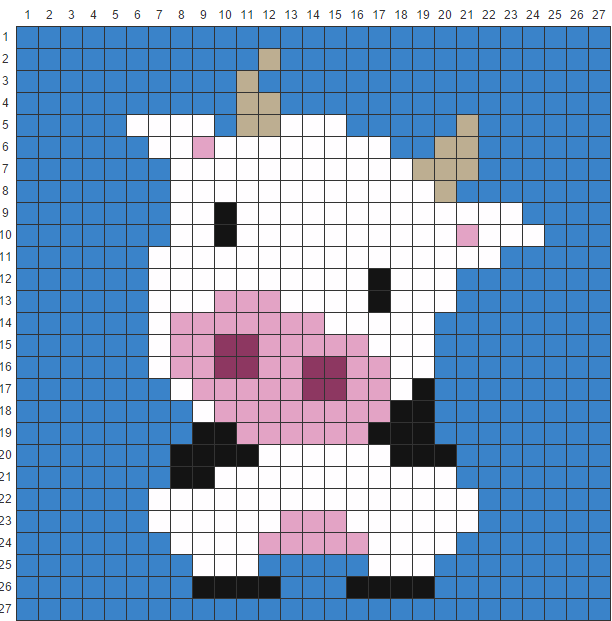I’ve never considered myself an artistic person. To me creativity and an artistic eye are very different. I have the ideas but often feel like I lack the skills to execute on them. Because of this, I see myself as a creative person but not artistic.
When you’re crocheting, you are most often following a pattern (there is a really cool technique called freeform crochet but I haven’t tackled that yet). You get to use crochet as a creative outlet but I wouldn’t consider following a pattern to be Art. The patterns tell you what size hook to use, the type of stitch to make, how many stitches to make, what color to use and when to change that color. Sometimes there is room for flexibility but more often than not, if you want it to look like the picture, you follow the pattern.
Last year I discovered a whole category of crochet projects called graphghans. Graphghan is a portmanteau of graph + afghan (a throw blanket if you are unfamiliar with that term). The idea is simple. Using a grid, you create a picture and then the resulting graph serves as your pattern. I’ve seen a few variations of how to use the graph, including creating individual squares for each grid cell then stitching them together, corner-to-corner crochet (C2C) where you work on the diagonal and stitch like you are stepping up stairs, or even a basic single crochet where each grid cell corresponds to one stitch. The C2C method is my personal favorite (the fox blanket at the start of this post uses that method), but I also use the single crochet method for my Christmas stockings.
 A cow design I created for a blanket for my nephew
A cow design I created for a blanket for my nephew
When I started with graphghans, I would search for patterns that others had created so I could follow along. But it didn’t take me long to realize that these graph patterns are pixel art. Pixel art is usually a digital art form where you create and edit the image at the pixel level (think old school Mario or Kid Pix if you are a child of the 90s). I find it fascinating that an art form that is usually dependent on technology to come to life has found new energy in the handmade community. I love the unconventional ways our modern, digital world can influence traditional and time-honored crafts.
 My baby penguin stocking design
My baby penguin stocking design
I started creating graphs for all of my ideas. When I wanted a super personal gift? Make a graph and use it for a blanket. When I wanted a unique Christmas stocking design? Make a graph and use it for color changes on a super simple stocking pattern. When I wanted to submit to an art show? Make a graph and stitch it up to be framed. I even tried to make my own pattern for a pair of mittens — those are currently languishing in my WIP (work-in-progress) pile, the graveyard for “meh” ideas as any prolific crafter can tell you.
Google “pixel art” and you can fall down a rabbit hole of talent and artistic expression. The works of art created with the humble pixel are incredible.(Shameless plug: check out The Dead Pixel Society, a project founded by a friend, to get yourself started) While I personally do not create pixel art on that scale, I have found that the simplicity of the art form provides me a framework in which to exercise my creativity and marries my passion for tech with my passion for crafts.
Find related posts:CraftingBeyond the screen